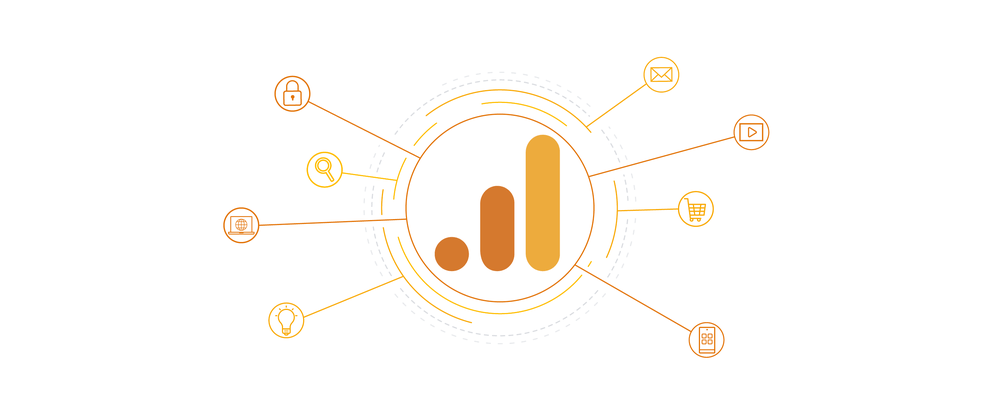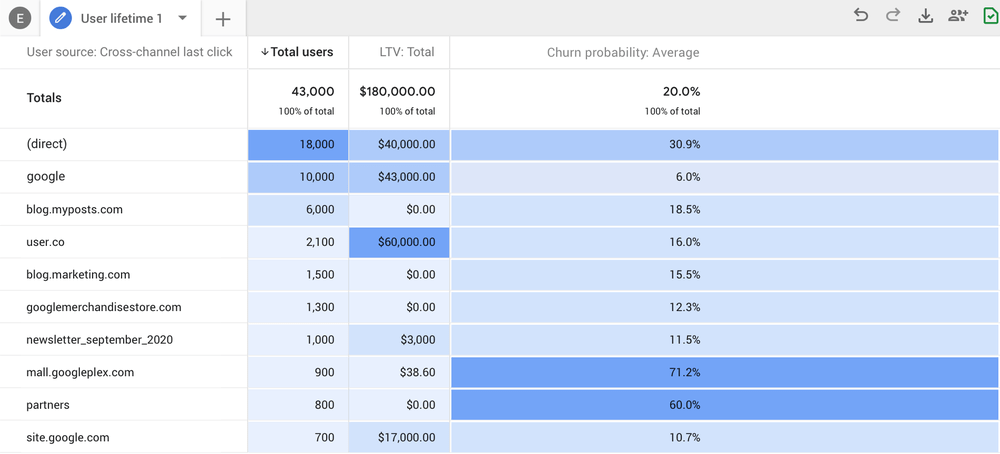The current version of Google Analytics is known as Universal Analytics. However, Analytics 4 (GA4) is poised to rework how we use analytics for data collection, storage, and utilization.
Across the globe, hundreds of thousands of businesses of varying sizes rely on Universal Analytics to help understand how their customers behave while browsing their websites. They use this information to help create better experiences through the improvement of ease of conversion, user experience, and user flow.
With more and more business moving online, it’s becoming increasingly important for businesses to make the most from their digital analytics tools to help spend their marketing dollars wisely.
Google Analytics 4 is designed to help marketers, webmasters, and business owners glean the essential information to help them growth their businesses and be ready for what’s next.

How GA4 Differs
Addresses Shifts in Behavior
Major shifts in consumer browsing and shopping behavior, alongside an increased focus on privacy, have made current industry standards and analytics unable to keep pace. In fact, many marketers say that figuring out how to better utilize the information and insights from Analytics is one of their top priorities.
Builds on App + Web Infrastructure
GA4 was originally known as Google’s “App + Web” beta that they release during 2020. It now has the formal name of Analytics 4 and is anticipated to roll out fully in late 2021.
Utilizes Machine Learning
GA4 utilizes Google’s advanced A.I. algorithms and machine learning at its core to help provide users with helpful insights while providing a complete look at your customers across multiple platforms.
Built for the Future
GA4 has privacy at the core of its design. We’re quickly heading towards an age where cookies and identifiers may become a thing of the past. Since GA4 is privacy-centric, you can rest assured that industry changes like restrictions on cookies will have a minimal impact on the efficacy of your data.
Focused on Utilizing Other Google Tools
While Universal Analytics was focused largely on collecting and storing data for usage strictly within Analytics itself, GA4 has grander visions. GA4 focuses on collecting and storing data for a wide variety of other Google measurement tools including: Google Tag Manager, Analytics 4, and Google Data Studios.
Smarter Insights for Better Decisions
By using Google’s advanced machine learning models, GA4 is capable of alerting you as soon as it detects any significant trends in your data. This can be used in a wide variety of ways including:
-
- Products seeing an increase in customer demand
- Calculating churn probability to help improve retention
- Anticipate future actions customers might take
- Predicted revenue and lifetime value of a customer
You can leverage these insights to better understand the trends and habits of customers who are more, and less, likely to spend compared to others.

New Integrations Across Google Properties
GA4 has better connectivity than Universal Analytics to other Google properties and tools. This will enable users to make more informed decisions and create audiences to help maximize the ROI from your marketing efforts.
Track Marketing Lift
If you’re unfamiliar with Marketing Lift, it’s the idea that multiple avenues of marketing (Social Media, SEO, PPC, etc.) can all contribute to a customer taking a desired action. In Universal Analytics, they use “Last Touch” attribution which means that whichever touchpoint was the final point of conversion receives all of the credit.
GA4 will be able to much more accurately attribute different touch points to the same conversion, making it easier to follow a customer’s journey to becoming a customer and help businesses know where their marketing dollars are best utilized.
Complete Customer Understanding
GA4 focuses on providing marketers with customer-centric measurement, rather than information scattered across multiple platforms. This new analytics is able to tag users across multiple platforms, devices, and apps to help you follow your customer’s journey.
This will help businesses understand the entire life cycle of their customers from discovery to conversion to retention and repeat business.

Advanced Modeling
GA4 will be able to use advanced predictive models based on industry trends and past information to help fill in the gaps in information. Be it through increase privacy measures or the deactivation of cookies. This will help businesses still be in the know regarding browsing behaviors even when the information may be lacking.
When Can We Expect Google Analytics 4?
Well, the good news is that it’s already here…kind of. Businesses are able to begin setting up GA4 properties to run parallel to their existing Universal Analytics properties. However, much of the conversion analysis and predictive measurements are still in development.
GA4 is expected to be largely rolled out by late 2021 at which point businesses will begin being able to substitute their existing analytics properties with GA4.
How Do I Start Preparing Now?
To being preparing for Google Analytics 4, begin with the following:
-
- Turn on your GA4 properties on ASAP so they can begin collecting data. GA4 will not retroactively pull web browsing data, so the sooner you create the property the more data you’ll have.
- Copy and filters, goals, and views from Universal Analytics over to GA4.
- Get your source attribution in place. Make sure that your source conversion tracking is set up properly to make sure you can gain the most from GA4’s advanced conversion attribution.
If you’re not sure how to get started, a digital marketing company in Santa Rosa is a great place to start. WSI Smart Marketing is a results-driven SEO agency with years of experience. Our team of marketers have the expertise and know how to help you come up with a sound digital marketing strategy to prepare your business for the future. To learn more, call us at (707) 843-3714.


